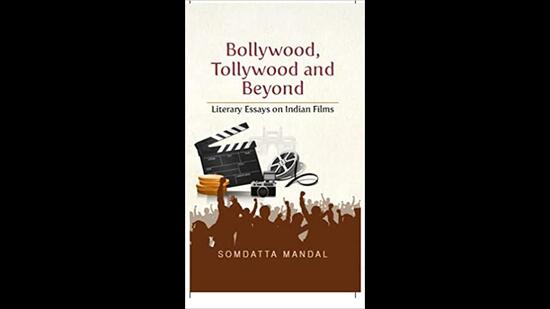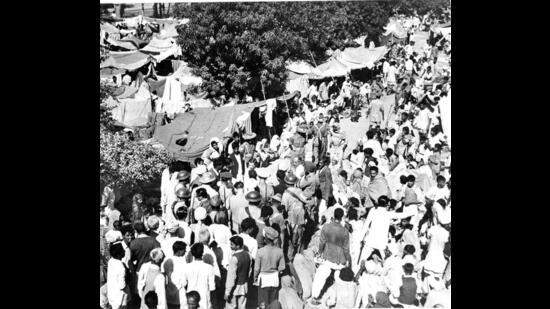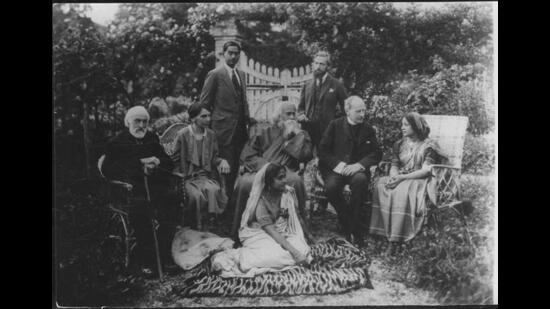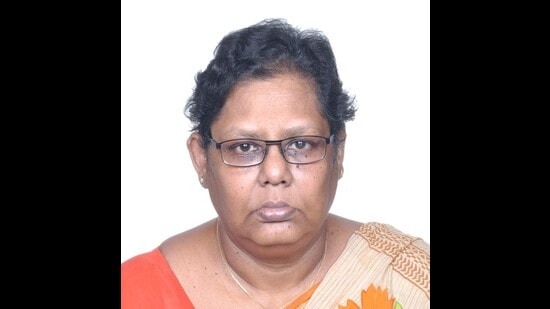Film studies has broadened the scope of writing about film, expanded its readership, and transcended the exclusive domain of film scholars and those who teach film theory. Driven by the need to express their passion for film, academics and non-academics from various disciplines are also venturing into this professional writing arena.
Viswa Bharati, Somdatta Mandal, retired chairman of the English department of Santi Niketan, said: Reflection, Refraction, Rejection: Three American Writers and the World of Celluloid (2002) and Film and Fiction: Words into Images (2005). Her latest work consists of her 18 strong essays dealing with three very different segments. Thematic Studies, Celebrities and Directors, and Individual FilmsIn fact, the book contains enough material for three volumes. Despite her being a pure scholar, Mandal eschews heavy theories that could confuse her lay readers, and her words and style are free of jargon.

Her socio-historical approach to cinema touches on subjects such as films about partitions and their influence in both Punjab and Bengal, as well as representatives of minority communities such as Anglo-Indians and Muslims. While the book provides a strong frame of reference for students and scholars of film studies in these fields, it is somewhat surprising that the author left out her three Muslim-centric films of Siam Her Benegal. is. Mammo (1994), Sardari Begum (1996) and Zubeida.
Interestingly, the book features both widely known films that readers may have seen many times, as well as some lesser known films, to shed light and ask questions. Contains discussion and analysis that deliberately strays into the sociological issues it raises. Among these we might mention her analysis and work on films like Deepa Mehta earth 1947 Based on the novel by Bapsi Sidhwa popsicle manand a very in-depth analysis of Eisha Mulhalla’s lesser-known films desperately looking for helen in chapter Vamp imitation and identity issues in the diaspora.

Mandal’s analysis of the “Partition” film is very insightful. The event has become something of a double-edged sword for filmmakers who often look through a cinematic lens and personal perspective. This section is divided into four detailed chapters. first time, Amputation and/or Reconstruction: A Visual Representation of the Bengal Division This is of utmost importance as most Indians associate the partition with Punjab and Bengal. Second, Relive the Bengal partition in a documentary Includes a two-part in-depth study of Supriyo Sen’s memoir about the split seen through his own parents in the film. way home When fictitious hometownPart III, Celluloid representation of Punjabi parcelsfilm-like scans TamasML Anand’s Lahore (1949) is considered one of the earliest attempts to depict the partition of India on celluloid. Carter Singh (1959) directed by Saifuddin Saif. The author states, “It is considered his one of the greatest Punjabi films of all time to ever come out of Pakistan.”
Among mainstream Indian films, authors surprisingly mention the works of Manmohan Desai. Charia (1960) deals with the director’s favorite lost-and-found formula, but with the action placed on the eve of the partition. Who can forget MS Sathyu’s classics? Garum Hawa A section entitled Based on Ismat Chughtai’s story? Films about Partitions, Border Crossing and Survivaldiscusses classic movies like Nemai Ghosh chinnamul (1951) Almost all of the filming was done at Shielda station in Calcutta. They don’t know what real refugees are waiting for. Interestingly, a young man who approached Gauche to work on his film got a small role. His name is Ritwik Ghatak.

Besides the Ghatak trilogy, which is based on the division between families and the influence of Bengali youth, the author also delves into Bengali films produced in the 1970s.Among them is the Bimal Bas navarag (1971) Rajen Tarahudar starring Uttam Kumar and Suchitra Sen Palanca (1976), and the first Bangladeshi work, Surya Digal Bali (1976), co-directed by Masiruddin Shaker and Sheikh Niamat Ali.
of Women in film representation, Mandal guides us through the film adaptations of Tagore’s stories and novels. Questions like “Was Tagore a feminist?” Researched and analyzed right up to her death, they emphasize Mandal’s personal interpretation of the female character. teen kanya Use Charlata To Garlebere.

enlightening chapter, May I become the mother of a hundred sons! analyse Barrenness and motherhood in Bengali cinema It focuses on the creative work of Rabindranath Tagore and the childless women of the Tagore family. This is a subject that few people dare to touch. Among the Tagore family, Debendranath his Tagore’s son Jyotirindranath and his grandson Balendranath (Birendranath’s son) had no children. His three of Tagore’s child marriages were childless, and his only son Ratindranath was also childless. Mandal also sees childless women in Satyajit Ray’s films (Monihara, Devi and Charulata When Garlebere) with some of the women in Rituparna Ghosh’s films Kera When Antermahal.

The book has a brief preface by renowned film theorist, critic and scholar MK Raghavendra and a detailed introduction by the author himself. The cover is attractive, but the photographic reproductions of the film’s stills are printed within the text and not on separately printed and bound art paper, which lacks clarity.
In short, this is an insightful book that will appeal to both film scholars and the intelligent general reader.
Shoma A Chatterji is an independent journalist.she lives in kolkata
Views expressed are personal
Get a flat 20% off annual subscription plans this winter season
Enjoy unlimited digital access with HT Premium


